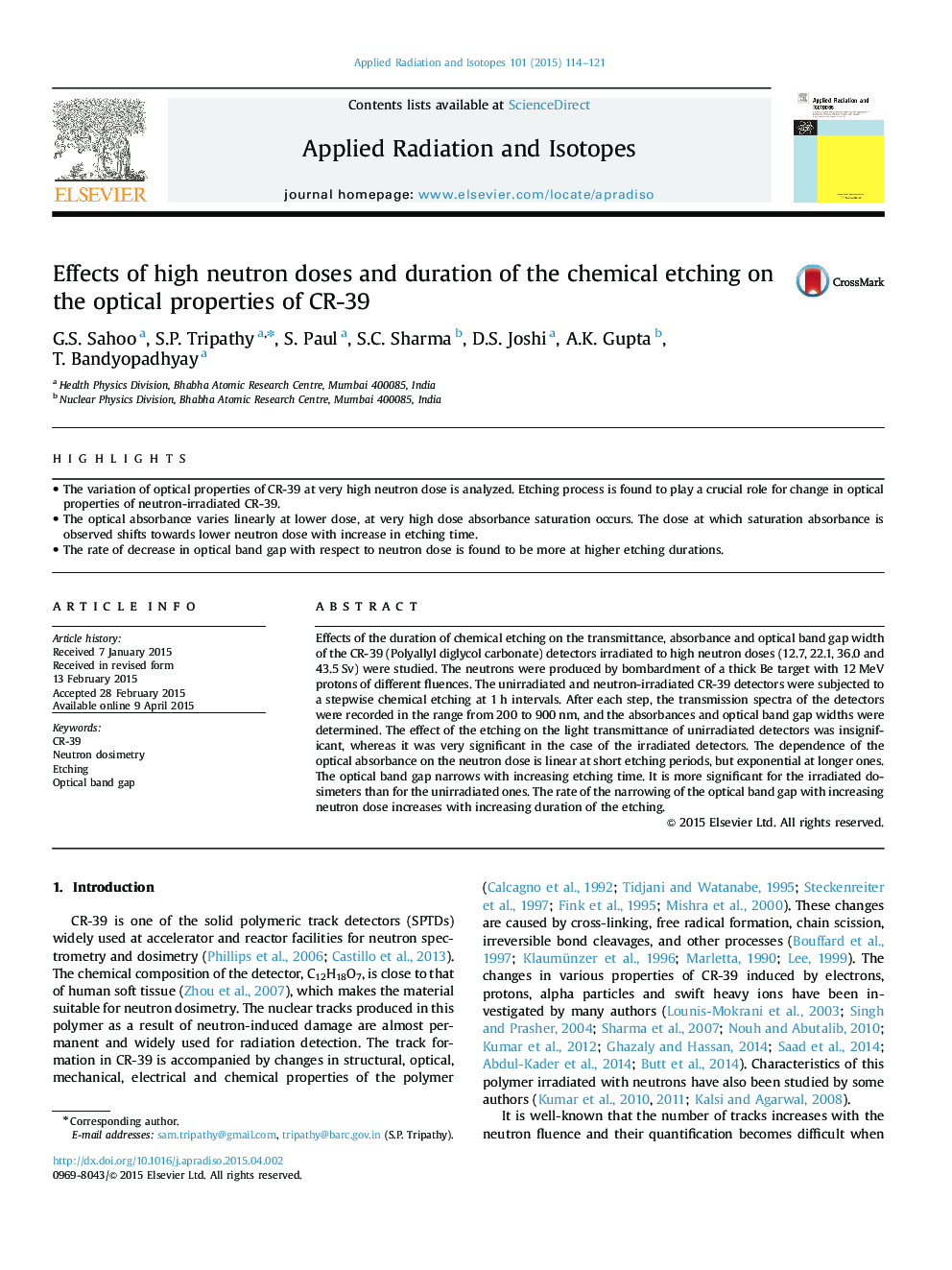| Article ID | Journal | Published Year | Pages | File Type |
|---|---|---|---|---|
| 1877524 | Applied Radiation and Isotopes | 2015 | 8 Pages |
•The variation of optical properties of CR-39 at very high neutron dose is analyzed. Etching process is found to play a crucial role for change in optical properties of neutron-irradiated CR-39.•The optical absorbance varies linearly at lower dose, at very high dose absorbance saturation occurs. The dose at which saturation absorbance is observed shifts towards lower neutron dose with increase in etching time.•The rate of decrease in optical band gap with respect to neutron dose is found to be more at higher etching durations.
Effects of the duration of chemical etching on the transmittance, absorbance and optical band gap width of the CR-39 (Polyallyl diglycol carbonate) detectors irradiated to high neutron doses (12.7, 22.1, 36.0 and 43.5 Sv) were studied. The neutrons were produced by bombardment of a thick Be target with 12 MeV protons of different fluences. The unirradiated and neutron-irradiated CR-39 detectors were subjected to a stepwise chemical etching at 1 h intervals. After each step, the transmission spectra of the detectors were recorded in the range from 200 to 900 nm, and the absorbances and optical band gap widths were determined. The effect of the etching on the light transmittance of unirradiated detectors was insignificant, whereas it was very significant in the case of the irradiated detectors. The dependence of the optical absorbance on the neutron dose is linear at short etching periods, but exponential at longer ones. The optical band gap narrows with increasing etching time. It is more significant for the irradiated dosimeters than for the unirradiated ones. The rate of the narrowing of the optical band gap with increasing neutron dose increases with increasing duration of the etching.
